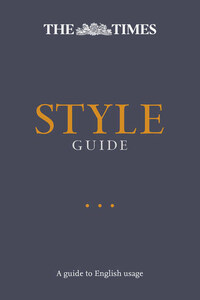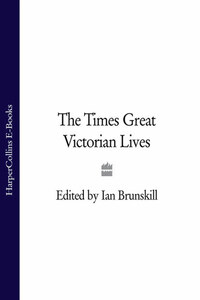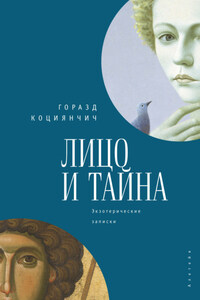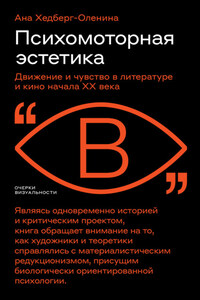Copyright
Published by Times Books
An imprint of HarperCollins Publishers
Westerhill Road
Bishopbriggs
Glasgow G64 2QT
www.harpercollins.co.uk
[email protected]
First published 2003
Second edition 2017
© Times Newspapers Ltd 2017
www.thetimes.co.uk
The Times® is a registered trademark of Times Newspapers Ltd
All rights reserved under International and Pan-American Copyright Conventions. By payment of the required fees, you have been granted the nonexclusive, non-transferable right to access and read the text of this e-book on screen. No part of this text may be reproduced, transmitted, downloaded, decompiled, reverse engineered, or stored in or introduced into any information storage retrieval system, in any form or by any means, whether electronic or mechanical, now known or hereinafter invented, without the express written permission of HarperCollins e-books.
The contents of this publication are believed correct at the time of printing. Nevertheless the publisher can accept no responsibility for errors or omissions, changes in the detail given or for any expense or loss thereby caused.
HarperCollins does not warrant that any website mentioned in this title will be provided uninterrupted, that any website will be error free, that defects will be corrected, or that the website or the server that makes it available are free of viruses or bugs. For full terms and conditions please refer to the site terms provided on the website.
Ebook Edition © April 2017 ISBN: 9780008146184
Version 2017-04-27
Introduction
This updated version of The Times Style Guide aims to provide writers and sub-editors with a quick reference to contentious points of grammar and spelling, and to guide them through areas where confusions have arisen in the past. It is a guide, not a straitjacket. Consistency is a virtue, but it should not be pursued at the expense of clarity, elegance or common sense.
By the standards of its predecessors this is a permissive volume. It avoids unnecessary prescription and prohibition. It tries to distinguish linguistic superstitions from grammatical rules. It hesitates to condemn common usage that neither baffles nor offends. English is not a language fixed for all time. Speech changes and its written form should change too. The Times must use the language of its readers, but that language at its best, clearest and most concise.
The guide sets out the paper’s detailed preferences in such fields as capitalisation, hyphenation and variant spelling. More general entries are intended to encourage reflection about words and the way we use them. While all Times journalists should follow house style, they should not do so unthinkingly. Considered exceptions can (and often must) be made, especially in direct quotes, in features, diaries and other less formal kinds of writing, and with columnists whose individual voices should be heard and whose flow of argument should be preserved.
Where extra guidance is needed, and for all spellings, hyphenations etc not covered by the guide, staff are expected to use as their first point of reference Collins English Dictionary. Other helpful resources are the New Oxford Dictionary for Writers and Editors (Odwe), the Concise Oxford or Chambers. For place names The Times Comprehensive Atlas of the World should be consulted.
Further advice on style and on good writing may be found in the familiar authorities: Fowler (Modern English Usage), Partridge (Usage and Abusage), Gowers (The Complete Plain Words) and their admirably brisk US counterpart Strunk & White (The Elements of Style). The compendious Chicago Manual of Style contains sensible (American) guidance on almost everything. Kingsley Amis’s The King’s English takes a more idiosyncratic approach. All are valuable works of informed and considered opinion; none should be regarded as a repository of unbreakable rules.
There are thoughtful books on the particular challenges of journalistic writing by Harold Evans (Essential English for Journalists, Editors and Writers) and Keith Waterhouse (On Newspaper Style).
Acknowledgments
Special thanks to Isabella Bengoechea, Magnus Cohen, Fiona Gorman, Alan Kay, Matthew Lyons and Siobhan Murphy, who worked on production of the book at The Times, and to Gerry Breslin, Jethro Lennox, Kevin Robbins and Sarah Woods at HarperCollins.
Thanks also to Nic Andrews, Chris Broadhurst, Josie Eve, Hannah Fletcher, Jeremy Griffin, Robert Hands, Oliver Kamm, Nick Mays, Robbie Millen, John Price, Chris Roberts, Fay Schlesinger, Mark Shillam, Craig Tregurtha, Emma Tucker, Roland Watson, Rose Wild and John Witherow at The Times; and to Tim Austin, Richard Dixon, Sir Simon Jenkins and the late Philip Howard, who were responsible for earlier editions of this guide.
Aa
a, an use a before all words beginning with a vowel or diphthong with the sound of u (as in unit) — a eulogy, a European etc; but use









